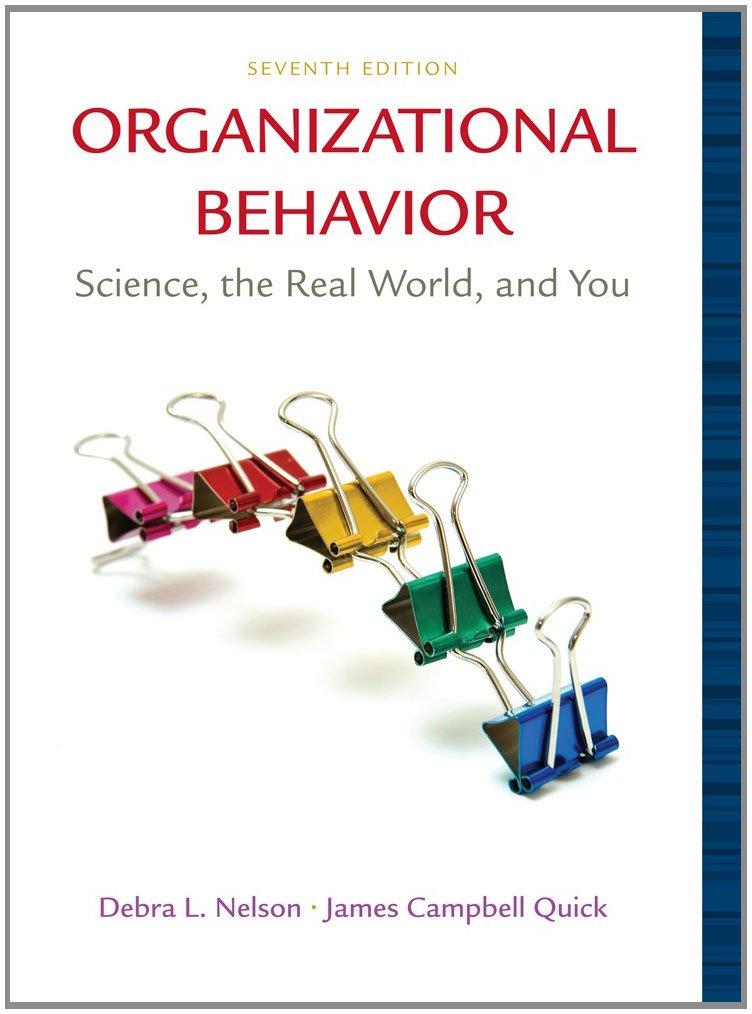This case focuses on the controversial $165 million in retention bonuses paid to employees of the Financial
Question:
This case focuses on the controversial $165 million in retention bonuses paid to employees of the Financial Products unit of the American International Group (AIG), a behemoth insurance and financial services company. In early 2008, employees in the Financial Products unit were asked to remain with the company through the unit’s shutdown and, essentially, to work themselves out of a job. To entice talented employees to stay and work through the shut-down, a contractual retention bonus plan was instituted. When the bonuses were paid in early 2009, controversy and outrage arose given that AIG was the recipient of a substantial amount of United States government bailout money under it Troubled Assets Relief Program (TARP). Amid this controversy, Edward Liddy, AIG’s CEO, requested the bonus recipients to return half of the bonus amount. Some Financial Products employees decided to return their bonuses; others opted to keep their bonuses. Many, is not all, affected Financial Products employees felt betrayed by AIG because of repeated reassurances of the bonus payments under contractual obligations.
The case is related to multiple motivational concepts. Internal needs reflect the reasons for which the employees chose to remain employed with AIG during the process of winding down the Financial Products business. External incentives reflect the retention bonus payments. In addition, needs theories of motivation can be invoked to provide perspective on what seem to be important motivational factors for the Financial Products employees. Equity theory and the individual/organizational exchange (or social exchange) relationship are highly relevant to the case¾and, arguably, provide the best explanation of the behavioral dynamics described in the case. Both perspectives help in explaining and understanding employees’ reactions to being asked to return part of their bonuses in the wake of the governmental and public outrage. Expectancy theory also can be applied to the case facts, by examining the impact of expectancy, instrumentality, and valence on the motivation of the Financial Products employees.
Questions
1. What types of work behaviors did AIG intend to encourage through its retention bonus plan?
2. Which needs seem to be important to the employees of AIG’s Financial Products unit?
3. Using the model of the individual-organizational exchange relationship, explain the relationship that employees of AIG’s Financial Products unit believed they had with the company. How was this exchange relationship violated?
4. Which motivation theory do you think has the most relevance for understanding the responses of the Financial Product employees to the implementation and unraveling of the retention bonus plan? Explain the reasoning behind your answer.
5. The amount of compensation earned by executivesas well as by professional athletes and famous actors/actresses and musiciansoften spark emotionally-charged debate. Do you believe the $1 million plus retention bonuses received by 73 employees of AIG’s Financial Products was excessive? Why or why not?
6. What would you have done if you were one of the 73 Financial Products employees who received a retention bonus of $1 million or more? Explain the reasoning behind your answer.
Step by Step Answer:

Organizational Behavior Science The Real World And You
ISBN: 9781111416218
7th Edition
Authors: Debra L. Nelson, James Campbell Quick





